
ZX Spectrum T-shirts!
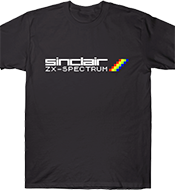
Ready prompt T-shirts!
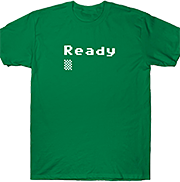
ZX81 T-shirts!
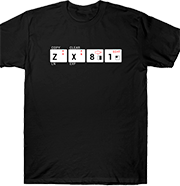
Arcade cherry T-shirts!
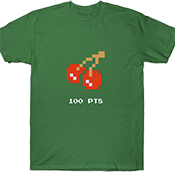
Atari joystick T-shirts!
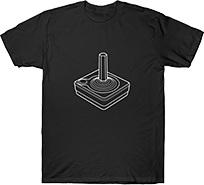
Spiral program T-shirts!
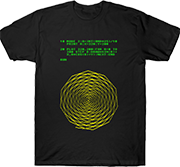
Battle Zone T-shirts!
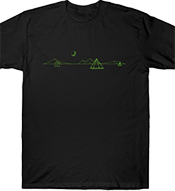
Vectrex ship T-shirts!
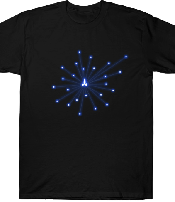
C64 maze generator T-shirts!
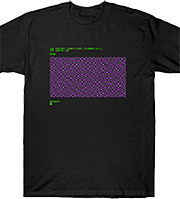
Moon Lander T-shirts!
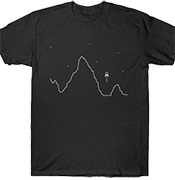
Elite spaceship t-shirt T-shirts!
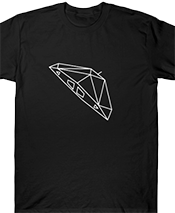
Atari ST bombs T-shirts!
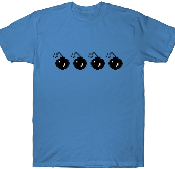
Competition Pro Joystick T-shirts!
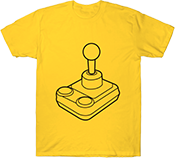
Pak Pak Monster T-shirts!

BASIC code T-shirts!

Breakout T-shirts!
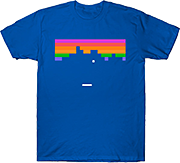
Vector ship T-shirts!

Pixel adventure T-shirts!
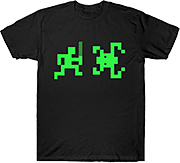

|
|

Welcome to old-computers.com, the most popular website for old computers.
Have a trip down memory lane re-discovering your old computer, console or software you used to have.
There are actually 1286 systems in the museum.
SHOW ME A RANDOM SYSTEM !
 LATEST ADDITIONS LATEST ADDITIONS
|
 ECD CORPORATION Micromind ECD CORPORATION Micromind
The Micromind was a very innovative machine ahead of its time ! But despite the small group working on the machine, prototyping and developing, and pushing the limits of the time, the machine never shipped. Apparently only a few prototypes were produced.
Development began as early 1975/1976 but commercial adverts appeared only in 1977.
One of the main features of the Micromind was its innovative (for the time) redefinable characters. Up to 120 characters could be software redefined by the ...
|
 |
 SEMI-TECH (STM) PC SEMI-TECH (STM) PC
This extremely rare computer is Portable PC (IBM compatible) conceived in the same plastic case as the Pied Piper, released by the same company in 1983. This computer incorporates a lot of features in a compact case, which was quite innovative at the time: built-in LCD display, printer, modem, phone and disk drives !
The STM PC is based on an Intel 80186 processor and two quadruple-density disk drives. The processor is faster than the one used in the IBM PC, a...
|
 LOGICAL MACHINE CORPORATION (LOMAC) Goliath LOGICAL MACHINE CORPORATION (LOMAC) Goliath
Logical’s Goliath is a server or disk file storage device has it was described at the time.
It has a capacity for 10 MByte, 30 MByte or 50 MByte of fixed disk storage and 10 MBytes of removable storage. The unit, which also houses the controller, may have memory ranging from 64K to 256K and capacity for up to 20 terminals.
Up to 20 Tina or David computers can link to Goliath as a distributed data processing system.
For ...
|
 LOGICAL MACHINE CORPORATION (LOMAC) Adam LOGICAL MACHINE CORPORATION (LOMAC) Adam
The Adam was the first computer released by Logical Machine Corporation (LOMAC) in 1975. In 1978 they also produced Tina which stands for "TINy Adam". In 1983 Logical released the David, and the L-XT in 1983. There was also the Goliath, a data storage server with 5MB hard drive. Goliath could be connected to up to 20 Davids or Tinas. David and Goliath names makes a clear reference to the mythic...
|
 LOGICAL MACHINE CORPORATION (LOMAC) Tina LOGICAL MACHINE CORPORATION (LOMAC) Tina
The Adam was the first computer released by Logical Machine Corporation (LOMAC) in 1976. In 1978 they produced Tina which stands for "TINy Adam". It seems to have the same specs as David but with two 8'' floppy disk drives. There was also the Goliath, a data storage server with 5MB hard drive. Goliath could be connected to up to 20 Davids or Tinas. David and Goliath names makes a clear reference to the mythical story found in the biblical Book of S...
|
 LOGICAL MACHINE CORPORATION (LOMAC) L-XT LOGICAL MACHINE CORPORATION (LOMAC) L-XT
The L-XT was the last computer released by Logical Business Machines, after the Adam, the David, the Tina and the Goliath in 1982. It was announced at the 1983 COMDEX Fall in Las Vegas, and commercially available in March 1984.
The L-XT uses a 16-bit Intel 8088 CPU with 192KB RAM, and equipped with a 5.25'' floppy drive unit (320 KB capacity) and a 10 MB hard disk (upgradable to 60 MB)...
|
 LOGICAL MACHINE CORPORATION (LOMAC) David LOGICAL MACHINE CORPORATION (LOMAC) David
The David is not the first computer released by Logical Business Machines. In 1974, LOMAC (Logical Machine Corporation) released the Adam. Some times later they also produced Tina (for TINy Adam). There was also the Goliath, a data storage server with 5MB hard drive. Goliath could be connected to up to 20 Davids or Tinas. David and Goliath names makes a clear reference to the mythical story found in the biblical Book of Samuel.
The David is powered by a 16-bit Intel 8086 CPU w...
|
 |
 GESPAC Gescomp 720 / 730 GESPAC Gescomp 720 / 730
GESPAC SA was a Swiss company who designed the G-64/96 Bus in 1979.
This interface bus concept provides a simple way to interface microprocessor modules with memory and peripheral modules on a parallel bus. The G-64/96 Bus uses a simple, yet modern and powerful interface scheme which allows a higher level of functionality from the single height Eurocard form factor. The low overhead of the G-64/96 Bus interface greatly eases the design of custom boards by the User. This is why, even many year...
|
 WELECT W86 WELECT W86
The W86 is a french computer released in 1983 by Welect. It's the second computer released by Welect after the W80.2.
The W86 is powered by an Intel 8086 (hence its name) to catch up with the IBM PC compatible trend of the moment and is thus able to run MS-DOS. But the W86 is also equipped with a Z80A to also be CP/M 86 compatible. It's thus an hybrid machine typical of the mid-80s when the professional industry was moving from CP/M to MS-DOS.
There are 128...
|
 |
 SMOKE SIGNAL CHIEFTAIN COMPUTERS The Chieftain 9822 SMOKE SIGNAL CHIEFTAIN COMPUTERS The Chieftain 9822
In 1978, Smoke Signal Chieftain Computers (SSCC) released their first computer: The Chieftain, followed in 1980 by the Chieftain Business System, an update to the original Chieftain.
At the start of 1982, the company introduced the Chieftain 9822, an update to the Business System featuring the same processor and static RAM options, as well as the same nine-slot bus equipped with the first two Chieftains.
The system could be equipped with either two 8-inch or two 5.25-inch floppy drives and...
|
 RANDOM SYSTEMS RANDOM SYSTEMS
|
 SHARP PC-1403 (H) SHARP PC-1403 (H)
As the PC-1401 family was rather successful, Sharp released an
update three years later.
The two new models were named PC-1403 and PC-1403H.
The differences were not large, but very helpful. They had a better display,
with 24 instead of 16 characters on the same display area, and lowercase
letters could now be used. Thus, there was an additional SML key to switch
between uppercase and lowercase entry mode.
Moreover, matrix calculatio...
|
 SONY Hit-Bit 501 SONY Hit-Bit 501
This is a quite particular MSX 1 computer as it has a tape-recorder built-in (BitCorder)with its own counter, and a kind of joystick screwable in the middle of the cursor keys, a bit like the Spectravideo SV-318.
Apart from that, it seems to be the same machine as the Hit-Bit 75. There is even the same built-in software (Personal Data Bank) composed of an agenda, a memo and an address manager, with which you can save your work w...
|
 ATARI 400 ATARI 400
The Atari 400 and 800 were the first home computers to use custom coprocessors and the first to use "sprites" and special video interruptions like display lists, features that will be implemented later on the Commodore 64 and Amiga (Atari 400/800 and Amiga were designed by Jay Miner).
It offered high graphic resolution, lots of colors and great sound capabilities, more than other computers could d...
|
 SINCLAIR ZX SPECTRUM+ SINCLAIR ZX SPECTRUM+
In 1984, the Spectrum is already 2 years old and starts to look obsolete when compared to its competitors and the Commodore 64 in particular. That's why Sinclair launches a new-look version of the Spectrum : the Spectrum+ was born.
In fact, it does not bring anything more apart from some cosmetic changes. Concerning the keyboard, the rubber keys are replaced with a better keyboard directly inspired by the keyboard of the QL, launched the same year. Though the keys are made of plastic this tim...
|
 MATRA MAX 20 MATRA MAX 20
The MAX-20 (for Matra AX-20) was the same machine as the Axel 20. The main difference between them was the removal of the function keys in front of the monitor. The 'E' version probably meant 'Education'
Although the machine was well conceived and the case offered a nice design, it had no success in the private sector because of its poor compatibility with the IBM-PC standard. However, about 1000 systems were sold to the French Department of Education as netwo...
|
 UNISYS Icon UNISYS Icon
The ICON workstation and LEXICON file server were originally designed by Cemcorp, the Canadian Educational Microprocessor Corporation, specifically for use in Canadian schools. They were first produced by Burroughs then took the name of Unisys when Burrough and Sperry merged to form Unisys.
Up to about 20 diskless workstations got everything off of the central file-server. They ran QNX, a flavour of Unix operating system with optional GUI shell. The ...
|
 ATARI 1200 XL ATARI 1200 XL
The Atari 1200 XL was the predecessor of the Atari 600/800 XL. It had much of the same characteristics, except the size of its ROM (16 KB instead of 24 KB) the BASIC Interpreter being supplied on a cartridge. Because the built-in Operating System was not designed very well, people are known to have swapped the OS ROM chip from their 800XL & put in the 1200 XL.
This machine was a flop in the marketplace and would be produced for only 4 months before being repla...
|
 NAKAJIMA ES 210 NAKAJIMA ES 210
Nakajima, a large Japanese OEM manufacturer, made (designed?) the Amstrad NC series and also sold their own version of the Amstrad NC-100 with a grey and blue case.
Technical features and built-in firmware seem to be the same as the NC-100....
|
 JOUÉCLUB SD-290 JOUÉCLUB SD-290
The JouéClub SD-290 system is exactly the same system as the ITMC SD-290 (see this entry for more info).
JouéClub is a big french toy seller, like the US Toy'r'Us....
|
 DIGITAL EQUIPMENT CORPORATION DE 68DT DIGITAL EQUIPMENT CORPORATION DE 68DT
Software for this system includes the debugger (in ROM), a BASIC interpreter, a FORTRAN compiler and a linker. The ROM debugger features interactive translation of assembly language mnemonics, tape, disk and printer commands and multiple breakpoints.
The system was available in two configurations : the DEC68 DT (pictured above) which includes a FDD, and the DEC68 C which fits into a smaller case without the FDD. It was priced from $2000....
|
 LATEST COMMENTS LATEST COMMENTS
|
|
|
|
 |
 |
 |
HEWLETT PACKARD HP-9825
I bought (using UK company money!) an HP 9825 in 1977 and programmed it to help plan routes for underseas telecommunications cables. It was my first (and last!) use of HPL, with all my previous programming being with Fortran. The single-line display made programming a real challenge! To further complicate my task, I discovered a few bugs. With everything on ROM, there was no easy way to address them. I ended up spending a few days in HP''s factory at South Queensferry near Edinburgh going through the bugs I''d identified. Not too surprisingly, HP changed to Basic language for later versions of the novel desktop computer.
|
 |
|
 |
|
|
|
|
 |
 |
 |
BRITISH MICRO Mimi 802 / 803 / 804
I have a Mimi 801/802 which is currently undergoing restoration. I am wondering if anyone has or knows of the existence of a schematic layout for the motherboard. Thanks
|
 |
|
 |
|
|
|
|
 |
 |
 |
MBO Tele-Ball IV
The MBO Teleball IV has a size of depth, width, height: 16x30.5x9 cm.
Weight follows.
CPU is a AY-3-8500
circuit could be similar to this
http://www.pong-story.com/GIMINI1978.pdf
score 0-15 (4bit)
|
 |
|
 |
|
|
|
|
 |
 |
 |
SHARP PC-5000
Does anyone know the exact name/part number of the plain paper print cartridge? They originally sold for $5.99 so I think many were made, or maybe another brand used the same type of cartridge. This is the "one time use" plain paper cartridge. I have one (only one) and don''t see any specific model or part number on it.
|
 |
|
 |
|
|
|
|
 |
 |
 |
ACORN COMPUTER BBC Master AIV
Chris Whytehead''s Acorn collection, and his website with details of the BBC AIV, is now looked after by the Center for Computing History: https://www.computinghistory.org.uk/news/34175/Acorn-Collection-Donated/
|
 |
|
 |
|
|
|
|
 |
 |
 |
S.H.G. Black Point (FS-1003/FS-2000)
The FS-1003 was definitly earlier than 1982. This Pong GI-Chips was used mainly until 1980. After there was coming a lot better system to the market.
I have also one but the Version FS-2000 and this was a 1978 device. Some information about you can find on following page:
https://www.gamescore.ch/en/shg-black-point-fs-2000
|
 |
|
 |
|
|
 RANDOM SOFTWARE TITLES RANDOM SOFTWARE TITLES
|

|
 game - platform game - platform
|

|
 game - puzzle game - puzzle
|
 |
 game - pachinko game - pachinko
|

|
 game - game -
|
|
| 
|
 game - baseball - sport game - baseball - sport
|
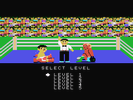
|
 game - boxing - sport game - boxing - sport
|
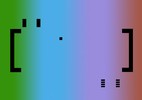
|
 game - ball and paddle - hockey - sport game - ball and paddle - hockey - sport
|
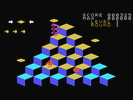
|
 game - isometric 3d - platform game - isometric 3d - platform
|
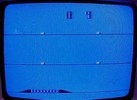
|
 game - motocross - motorbike - stunt game - motocross - motorbike - stunt
|

|
 game - shoot them up - space - vector graphics game - shoot them up - space - vector graphics
|
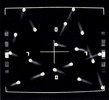
|
 game - ball and paddle game - ball and paddle
|
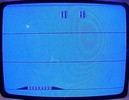
|
 game - motocross - motorbike - stunt game - motocross - motorbike - stunt
|
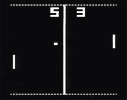
|
 game - ball and paddle - sport - tennis game - ball and paddle - sport - tennis
|

|
 game - ballistic - plane - shoot them up - shooting gallery - war game - ballistic - plane - shoot them up - shooting gallery - war
|
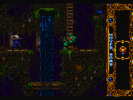
|
 game - platform game - platform
|
 RANDOM ADVERTS RANDOM ADVERTS
|
|
|







